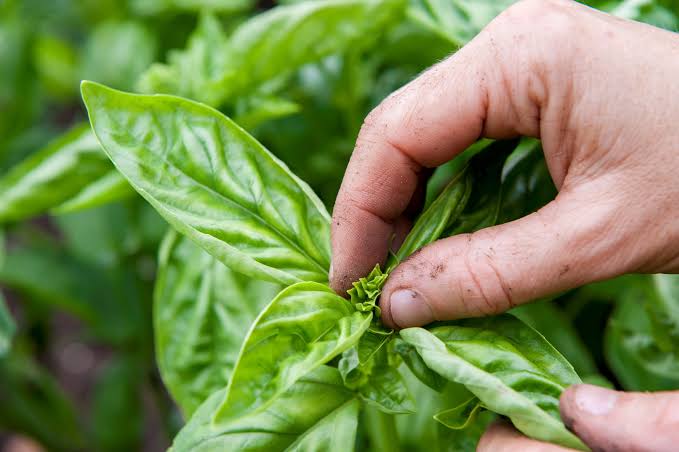If you’ve ever grown basil, you know how quickly this fragrant herb can take off. But here’s the secret to keeping it healthy, bushy, and flavorful: proper trimming. Many new gardeners are unsure when or how to trim basil, often ending up with tall, leggy plants that produce fewer leaves. Don’t worry—today you’ll discover how to trim basil plant the right way so it keeps producing fresh, aromatic leaves all season long.Why Trimming Basil Is ImportantTrimming isn’t just about keeping your plant neat—it’s about encouraging growth. Here’s why it matters:Promotes Bushier Growth: Regular trimming helps basil branch out instead of growing tall and spindly.Increases Harvest: More branches = more leaves for cooking.Prevents Early Flowering: Flowers stop leaf production; trimming delays this.Improves Flavor: Young basil leaves taste sweeter and more aromatic.When to Trim BasilTiming is everything!Start early: Begin trimming once the plant has at least 6–8 leaves (usually about 6 inches tall).Continue regularly: Trim every 1–2 weeks during the growing season.Avoid trimming too much: Never cut more than one-third of the plant at once to prevent stress.How to Trim Basil Plant (Step-by-Step)Step 1: Identify the Right SpotLook for a stem with a cluster of leaves. Just above the spot where two small leaves (or sets of leaves) are growing, that’s your cutting point.Step 2: Use Clean ToolsUse scissors, pruning shears, or simply pinch with your fingers. Make sure tools are clean to avoid spreading disease.Step 3: Cut Above a Leaf NodeTrim the stem about ¼ inch above a leaf node (the point where leaves grow out of the stem). This encourages the plant to grow two new stems from that point.Step 4: Remove Flower Buds ImmediatelyIf you see flower buds forming, pinch them off right away. This keeps the basil focused on producing leaves.Practical Trimming TipsMorning Harvest: Trim in the morning when leaves are most hydrated and flavorful.Small & Frequent Cuts: Regular small trimmings are better than cutting large sections at once.Use the Leaves Right Away: Freshly trimmed basil is perfect for pesto, salads, pasta, or freezing.Encourage Airflow: Avoid overcrowding by trimming inner stems to reduce humidity and disease risk.What to Do with Trimmed BasilDon’t let those aromatic clippings go to waste!Make fresh pesto with olive oil, garlic, and parmesan.Infuse olive oil or vinegar for a homemade kitchen gift.Freeze leaves in ice cube trays with olive oil for year-round flavor.Dry basil by hanging small bunches upside down in a cool, dry place.Common Mistakes to AvoidCutting too low: Never cut stems all the way down to the soil; leave at least 3–4 inches.Neglecting flowers: If basil flowers, leaf production slows dramatically.Over-trimming: Removing more than 1/3 of the plant at once can stunt growth.Ignoring lower leaves: Harvest from the top first; let lower leaves support plant health.ConclusionLearning how to trim basil plant is one of the simplest but most powerful gardening skills. A few mindful snips can transform your basil into a lush, bushy plant that rewards you with endless fresh leaves. Whether you’re growing basil on a sunny windowsill in Canada, in an outdoor herb garden in the UK, or on a balcony in the US, regular trimming will ensure a flavorful harvest all season long.🌿 Grab your scissors and try trimming your basil today—you’ll be amazed at how quickly it bounces back, fuller and tastier than ever!

